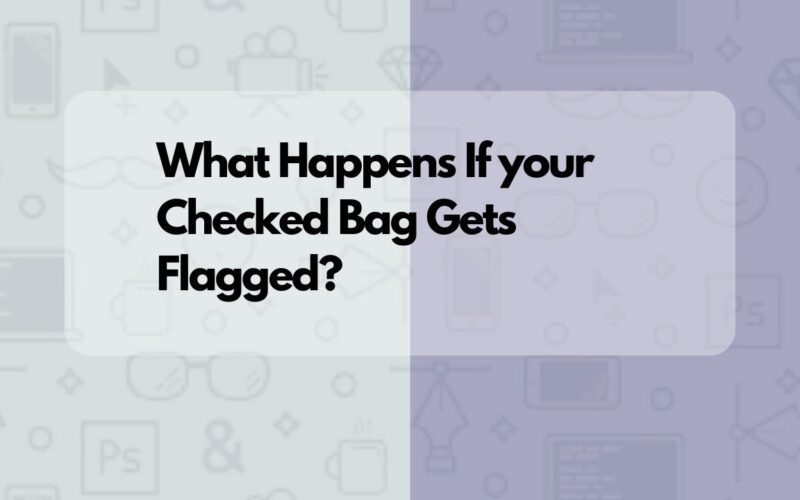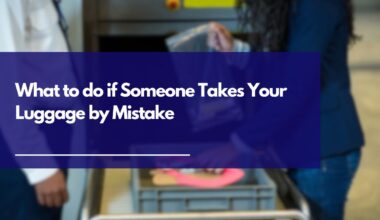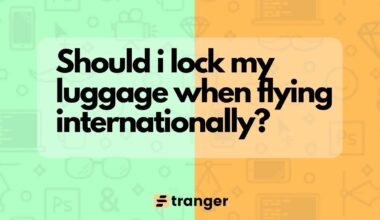As an Amazon Associate, I earn a small commission from qualifying purchases. Learn more about this.
Traveling can be both an exhilarating and occasionally nerve-wracking experience.
And when it comes to the prospect of our checked bags being flagged for additional inspection, the latter emotion often takes precedence.
So, let’s break down the process…
Understanding the Screening Process for Checked Bags
When you check your bag at the airline counter, it doesn’t directly board the aircraft. Instead, it’s sent through a series of conveyor belts to a centralized screening area.
Here, advanced X-ray machines scan every bag that will go into the cargo hold of the airplane.
These machines are designed to detect a wide range of security threats, from explosives to sharp objects. Basically, they’re the first line of defense in airport security.
Now, these machines are good, but they’re not perfect.
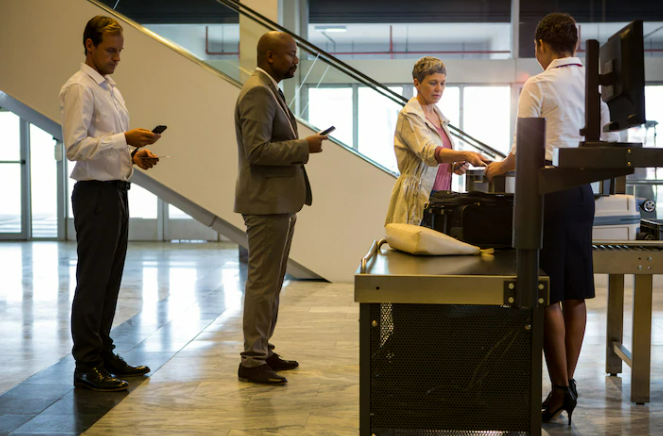
Various factors can trigger a false alarm, including the density of the items inside your bag, overlapping objects, or even certain types of organic materials.
In such cases, the X-ray machine flags the bag for additional screening.
If your bag gets flagged, it’ll be pulled aside for further inspection. A security officer will then manually go through the contents.
At larger airports, more advanced machines, like CT scanners, might be used for a closer look. They provide a more detailed, 3D image, allowing for a thorough assessment without necessarily having to open the bag.
It’s important to remember that screening protocols can vary depending on the country you’re in.
While the general process remains the same, certain countries might have stricter regulations or specific items that they focus on.
During this phase, if any prohibited items are discovered, you could face penalties ranging from simple confiscation of the item to fines or even legal consequences for more serious offenses.
If everything checks out, the bag is cleared and sent on its way to be loaded onto the plane.
What Happens If Your Checked Bag Gets Flagged?
When a bag is”flagged” it gets selected for additional screening after it has gone through the initial X-ray scan.
This is one of the few reasons that usually account for a manual search of your bags.
Now, this could happen for a number of reasons. It might be due to something suspicious appearing on the X-ray, or your bag might have been selected randomly.
Once a bag is flagged, it is typically taken to a separate area for closer inspection.
Here, TSA agents or equivalent security staff in other countries will open and manually inspect the contents.
Don’t worry, they are trained professionals who handle luggage carefully.
They’ll typically use gloves and are instructed to repack your items as they were, although there can be some variation in how neatly this is done.
But what about those personal items you’re concerned about?
Generally, the inspection is purely for security-related items. Your packed clothes, toiletries, and other personal items will be moved around for a thorough check but should remain in your bag unless they appear to be a security risk.
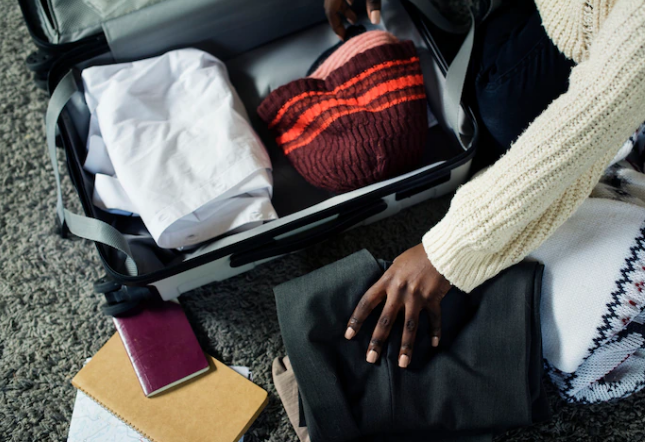
It’s important to note that if the security agents find any prohibited items, those will be confiscated.
You could also face additional scrutiny, and in extreme cases, legal action could be taken, although that’s quite rare for unintentional mistakes.
Sometimes, the security team will leave a note inside your bag to let you know it has been searched. This is especially common in the United States, where the TSA leaves a “Notice of Baggage Inspection” in your luggage.
Flagging doesn’t usually cause much of a delay; your bag will typically still arrive at the baggage carousel around the same time you do and would usually still fly with you.
However, if further inspections are needed, it might be delayed, and you’ll have to retrieve it from the airline’s customer service desk.
Why Your Bag Was Flagged?
1. Random check:
Believe it or not, a certain percentage of bags are flagged for no reason other than randomness.
Security agencies use a randomizing algorithm to pick some bags for additional screening, ensuring that the system isn’t entirely predictable.
So, if you’re ever the “chosen one,” try not to take it personally.
2. Triggers
Dense items or overlapping objects can sometimes appear as a blur or an unidentifiable shape on the X-ray screen.
For example, if you packed your toiletries right next to a pile of books, the scanner might have a hard time distinguishing between the two, triggering a flag.
Items like electronics, which contain a lot of wires and batteries, often raise red flags, too.
Things like toys and chargers can be an issue in some cases.
The same goes for packed food items, like that chunk of fine cheese or jar of homemade jam you’re bringing for grandma; these can look suspicious under an X-ray.
Related: What is allowed in checked baggage?
3. Prohibited Items
Prohibited items are an obvious reason for flagging.
You’d be surprised how many people forget that they left a pocketknife or a bottle of water in their checked bag.
The regulations about what you can and can’t pack in your checked luggage are pretty clear, but mistakes do happen.
If security finds something that’s not supposed to be there, your bag will be flagged, and the item will most likely be removed.
4. Others
And sometimes the cause for a flagged bag might be a bit more obscure.
For instance, unusual items like artwork or musical instruments, which are irregularly shaped and constructed from a mix of materials, can easily confuse the machine.
Final Thoughts
Your bag can be flagged for a multitude of reasons with some not even within your control.
But when it happens, depending on the situation and why it was flagged, a lot of things can take place.
Hope you find this article helpful.
